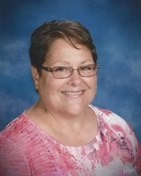Information
Wound Care: Unlocking the Potential to Heal
Copyright :
Many things must be in balance to successfully heal a wound. We will explore where a real difference can be made with: decreasing overall bioburden, providing wellness interventions, collecting and using data to determine priority goals, and utilizing a new method of cleansing the wound to decrease chance of infection. You’ll be able benefit from knowing the optimal methods and tools to accomplish the goal of successful wound healing.
OUTLINE
Moisture and bacteria balance- the key to healing
Holistic aspects of healing
- Nutrition, spiritual needs assessment, interventions
Infection protection
- Cleansing methods and breaking biofilm
Dressings and wound care products
- Discuss how to use the products on your buying contract effectively
- New categories of products
Advances in wound therapy- methods to promote healing
- Negative pressure wound therapy
- Modalities- Electrical simulation, Ultrasound
- Tissue and cell based products- Autografts, Allografts, Xenografts
OBJECTIVES
- List 3 methods known to increase endorphin levels to improve wellness for an individual
- Identify 3 methods of breaking biofilm in order to decrease wound bed bacterial count
- List 3 antiseptics that are FDA approved to use in wounds throughout the healing process
- Summarize 3 methods of wound debridement
- Defend choice of dressings based on wound characteristics and needs
- Compare characteristics of 3 types of tissue based products for wounds
ADA Needs
We would be happy to accommodate your ADA needs; please call our Customer Service Department for more information at 1-800-844-8260.
Satisfaction Guarantee
Your satisfaction is our goal and our guarantee. Concerns should be addressed to: PO Box 1000, Eau Claire, WI 54702-1000 or call 1-800-844-8260.
Joan Junkin, RN, MSN

Joan Junkin, RN, MSN, was introduced to wound care as a research analyst for the AHCPR (now AHRQ) panel that created the first ever pressure ulcer treatment guideline. After wound education and certification, she was the wound clinical nurse specialist for a 500-bed hospital and spent 10 years building an outpatient and inpatient program to improve wound outcomes. She conducted and published the first research documenting incontinence associated dermatitis prevalence in acute care and has published in several nursing and wound journals. Since 2008 she has devoted her time to teaching in 49 states and 5 provinces in Canada. This, along with her wound consulting business gives her a broad perspective. Joan is passionate about sharing essential information for healthcare providers with just enough humor to help navigate this challenging topic.
Speaker Disclosures:
Financial: Joan Junkin is an independent contractor and has an employment relationship with UNMC College of Nursing. She receives a speaking honorarium from Sage, a Stryker company. Joan Junkin receives a speaking honorarium and recording royalties from PESI, Inc. All relevant financial relationships with ineligible organizations have been mitigated.
Non-financial: Joan Junkin is a member of the Association for Advancement of Wound Care.

